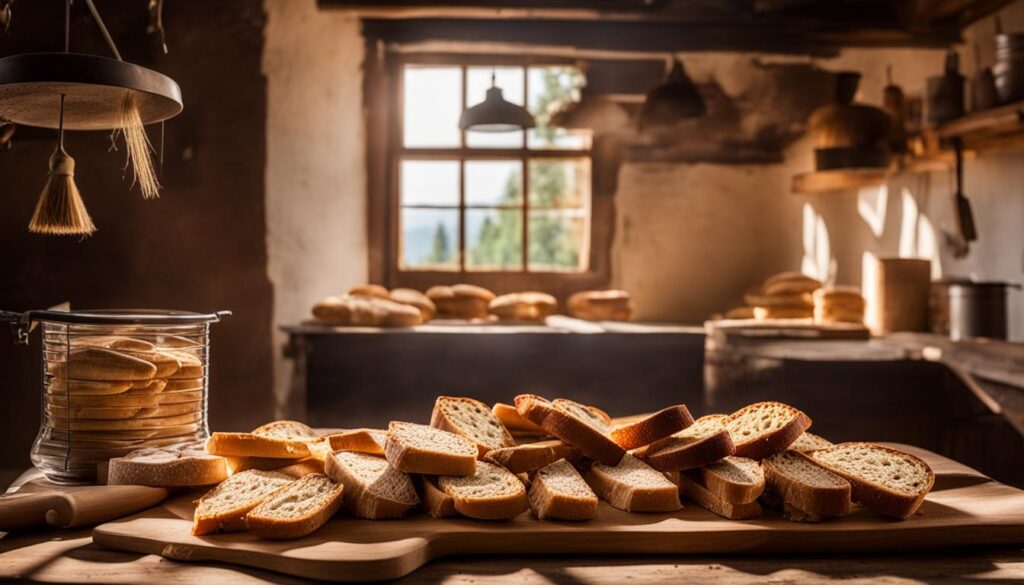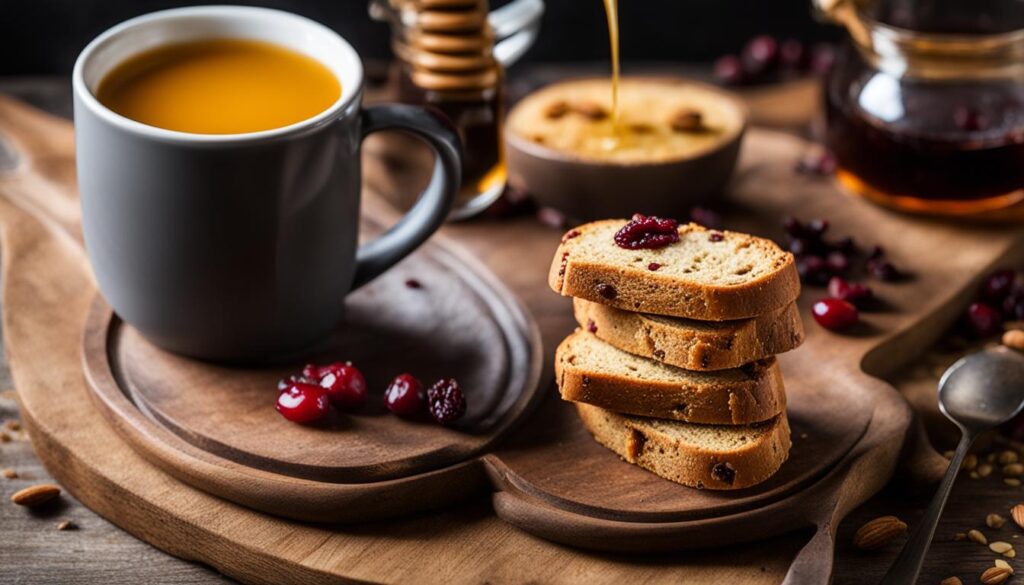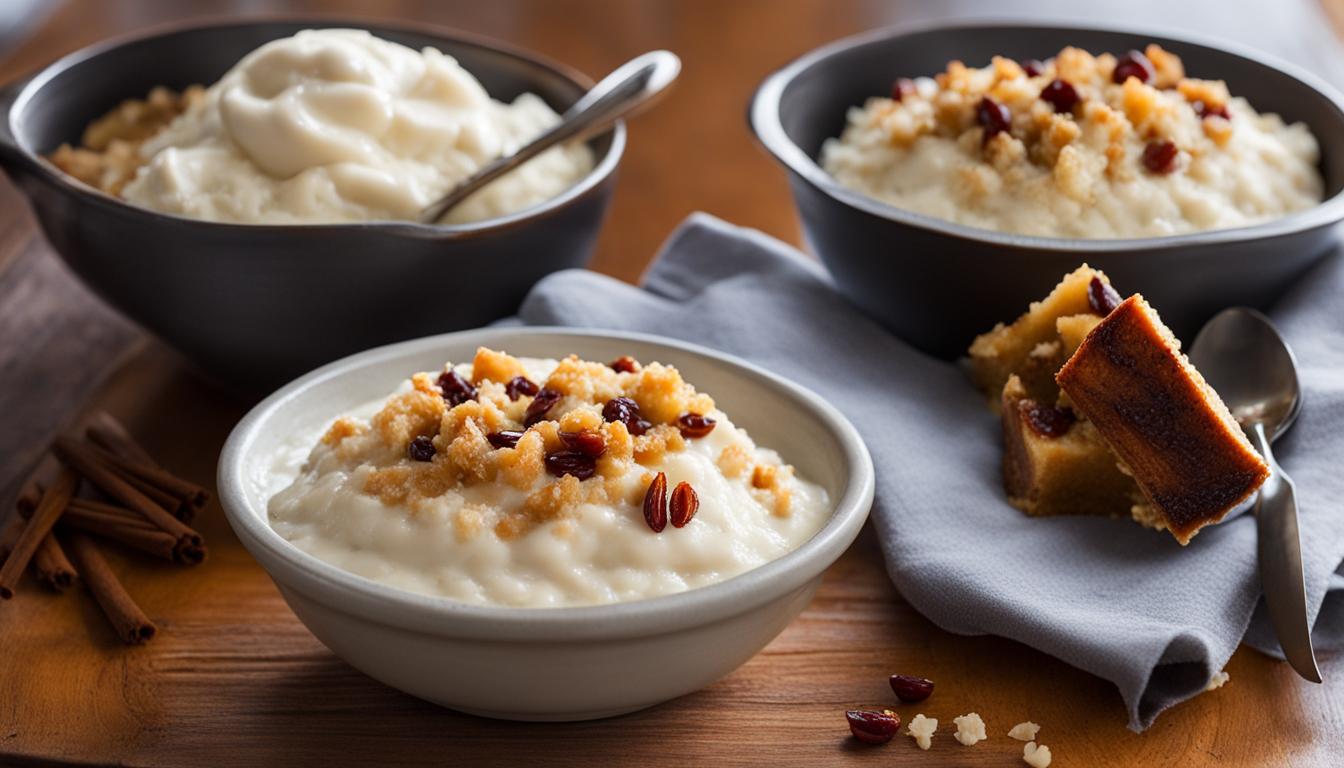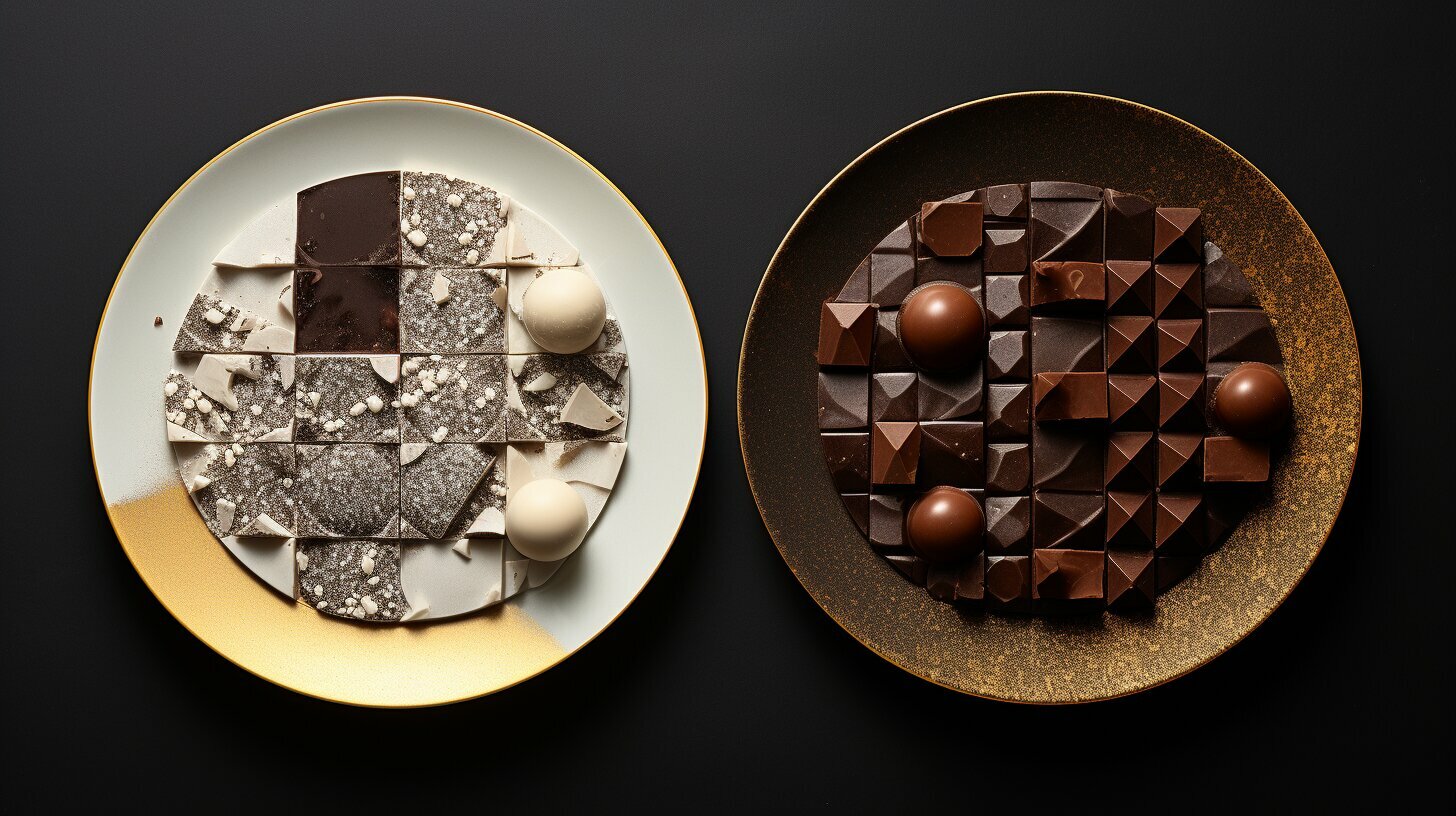Biscotti and rusks are both types of twice-baked cookies, but they do have some distinct differences that set them apart. Biscotti, which originated in Italy, are known for their dry and crunchy texture. They are often flavored with ingredients like almonds, citrus zest, and vanilla. Rusks, on the other hand, are more commonly associated with South African and Indian cuisine. They are typically softer and have a cake-like texture. Rusks can be flavored with a variety of ingredients, such as spices and dried fruits. These variations in texture and flavor are what make biscotti and rusks unique from each other.
Key Takeaways:
- Biscotti and rusks are types of twice-baked cookies.
- Biscotti have a dry and crunchy texture, while rusks are softer and have a cake-like texture.
- Biscotti originated in Italy, while rusks are popular in South Africa and India.
- Biscotti are flavored with ingredients like almonds, citrus zest, and vanilla, while rusks can be flavored with spices and dried fruits.
Origins and History
Biscotti, also known as biscotti di Prato, have a rich history that dates back to the 14th century. The origin of biscotti can be traced to the city of Prato in Tuscany, Italy. These iconic cookies were initially made with almonds, as the region was abundant in almond crops. The name “biscotti” actually comes from the Latin word “bis” meaning twice and “coctus” meaning cooked or baked, referring to the unique baking process these cookies undergo.
Biscotti gained popularity among sailors, including renowned explorer Christopher Columbus, due to their long-lasting nature. The twice-baked technique made biscotti ideal for long sea voyages as they could be stored for extended periods without spoiling. The dry and crunchy texture of biscotti also made them a convenient snack that provided sustenance during long journeys.
In contrast, the history of rusks can be traced back to South Africa and India. In South Africa, rusks were introduced by the Dutch settlers, who adapted their traditional rusk recipes to suit the local ingredients. Indian rusks, on the other hand, have a heritage rooted in the country’s rich culinary traditions. These variations in the origins of rusks highlight their unique cultural significance and regional adaptations.
The origins of biscotti:
– Originated in the city of Prato, Italy in the 14th century
– Made with almonds, abundant in the region
– Popular among sailors, including Christopher Columbus
The origins of rusks:
– Introduced by Dutch settlers in South Africa
– Rooted in Indian culinary traditions

Ingredients and Baking Techniques
When it comes to biscotti, the ingredients used in their preparation are crucial in achieving their characteristic texture and flavor. A typical biscotti recipe includes all-purpose flour, sugar, butter, eggs, vanilla extract, and almonds. These ingredients are mixed together to form a dough, which is then shaped into logs and baked. After the initial baking, the logs are cooled and sliced before being baked again to achieve the desired crunchy texture.
One of the interesting aspects of biscotti is the wide range of variations in recipes. While traditional almond biscotti remains a popular choice, bakers often experiment with different flavors and ingredients. Citrus zest, chocolate chips, dried fruits, and spices can all be added to create unique combinations and cater to different tastes. This versatility allows biscotti to be enjoyed in various ways, whether as a standalone snack or paired with other desserts.
On the other hand, the ingredients and baking process for rusks differ from biscotti. Rusks typically consist of all-purpose flour, sugar, butter, eggs, and flavorings such as spices and dried fruits. The dough is formed into a loaf and baked until it is cooked through. Once baked, the loaf is sliced into thick pieces and returned to the oven to dry out. This second baking gives rusks their characteristic dry and cake-like texture, which makes them perfect for dipping into tea or coffee.
Biscotti Ingredients
| Ingredients | Quantity |
|---|---|
| All-Purpose Flour | 2 cups |
| Sugar | 1 cup |
| Butter, melted | 1/2 cup |
| Eggs | 3 |
| Vanilla Extract | 1 teaspoon |
| Almonds, chopped | 1 cup |
Baking Process for Biscotti
- Preheat oven to 350°F (175°C) and line a baking sheet with parchment paper.
- In a large bowl, mix together the flour and sugar. Add the melted butter, eggs, and vanilla extract, and mix until well combined.
- Stir in the chopped almonds and mix until evenly distributed throughout the dough.
- Divide the dough in half and shape each half into a log on the prepared baking sheet.
- Bake for 30 minutes, or until the logs are golden brown and firm to the touch.
- Remove from the oven and let the logs cool for 10 minutes. Reduce the oven temperature to 325°F (165°C).
- Using a sharp knife, slice the logs into 1-inch thick pieces. Place the slices cut-side down on the baking sheet.
- Bake for an additional 15 minutes, or until the biscotti are dry and crisp.
- Let cool completely before serving.
By understanding the ingredients and baking techniques used in biscotti and rusks, you can appreciate the nuances of these delightful twice-baked treats. Whether you prefer the dry crunch of biscotti or the softer texture of rusks, both offer a delightful experience with every bite.
Flavor and Serving Suggestions
One of the great things about biscotti is the wide range of flavors they come in. From classic options like almond, anise, and hazelnut to more unique combinations like gingerbread, maple walnut, and mint chocolate chip, there’s something to suit every palate. Whether you prefer a nutty and aromatic flavor or something sweet and indulgent, biscotti has you covered.
When it comes to serving suggestions, biscotti are incredibly versatile. They can be enjoyed on their own as a crunchy snack or paired with a hot beverage like coffee or tea. Dunking biscotti into a cup of coffee or tea softens them slightly, releasing their flavors and creating a deliciously indulgent experience.
Biscotti can also be incorporated into other desserts for added texture and flavor. For example, they can be crumbled and used as a topping for ice cream or blended into the crust of a cheesecake for a unique twist. Additionally, biscotti can be served alongside traditional Italian desserts like gelato or tiramisu, providing a delightful contrast to their creamy textures.
Biscotti Flavors
- Almond
- Anise
- Hazelnut
- Gingerbread
- Maple Walnut
- Mint Chocolate Chip
Serving Suggestions for Biscotti
- Enjoy on their own as a crunchy snack
- Dunk biscotti into coffee or tea
- Crush and use as a topping for ice cream
- Incorporate into the crust of a cheesecake
- Serve alongside gelato or tiramisu

Conclusion
In conclusion, biscotti and rusks are unique in their own ways, despite both being twice-baked cookies. Biscotti, originating from Italy, are characterized by their dry and crunchy texture. Typically flavored with ingredients like almonds, citrus zest, and vanilla, they offer a delightful array of flavors. On the other hand, rusks are more commonly associated with South African and Indian cuisine, known for their softer, cake-like texture.
The variations in texture and flavor make biscotti and rusks distinct from each other. Biscotti have a long history, dating back to the 14th century in the city of Prato, Italy. They were favored by sailors for their longevity, thanks to the twice-baked process that made them resistant to mold. Biscotti are typically made with all-purpose flour, sugar, butter, eggs, and various flavorings, giving rise to a wide range of recipes.
Rusks, on the other hand, have their origins in South Africa and India. They can be flavored with an assortment of spices and dried fruits, offering a unique taste. Rusks are prepared by baking the dough, then cutting and drying them until they achieve their desired texture. Unlike biscotti, rusks have a softer bite, making them a comforting treat.
In summary, while biscotti and rusks share the commonality of being twice-baked cookies, they differ in texture, flavor, and cultural origins. Whether you prefer the dry and crunchy biscotti or the softer and cake-like rusks, both make for satisfying snacks. So, the next time you’re craving a twice-baked delight, you can choose between the Italian charm of biscotti or the South African and Indian flavors of rusks.
FAQ
What are the differences between biscotti and rusks?
Biscotti are known for their dry and crunchy texture, while rusks have a softer, cake-like texture.
Where did biscotti originate?
Biscotti, also known as biscotti di Prato, originated in the city of Prato in Tuscany, Italy.
What are the main ingredients in biscotti?
Biscotti typically contain all-purpose flour, sugar, butter, eggs, vanilla extract, and almonds.
How are biscotti baked?
The dough is formed into logs, baked, cooled, and then baked again to achieve the desired crunchy texture.
What flavors are available in biscotti?
Biscotti come in a wide range of flavors, including almond, anise, hazelnut, gingerbread, maple walnut, and mint chocolate chip.
How can biscotti be enjoyed?
Biscotti can be enjoyed on their own, dipped in tea or coffee, or paired with other desserts like gelato or tiramisu.
Where did rusks originate?
Rusks are popular in South Africa and India.
What flavors can rusks have?
Rusks can be flavored with a variety of spices and dried fruits.
How are rusks different from biscotti?
Rusks have a softer, cake-like texture compared to the dry and crunchy texture of biscotti.
How can rusks be enjoyed?
Rusks can be enjoyed as a snack, dipped in hot beverages, or used as a base for desserts like trifle.
 Skip to main content
Skip to main content


